
Old school.
NASA’s Lunar Roving Vehicle (LRV) first used on Apollo 15 in 1971.
It looks like what we might imagine for technology that was used more than 50 years ago.
Simple, barebones, and designed for limited utility.
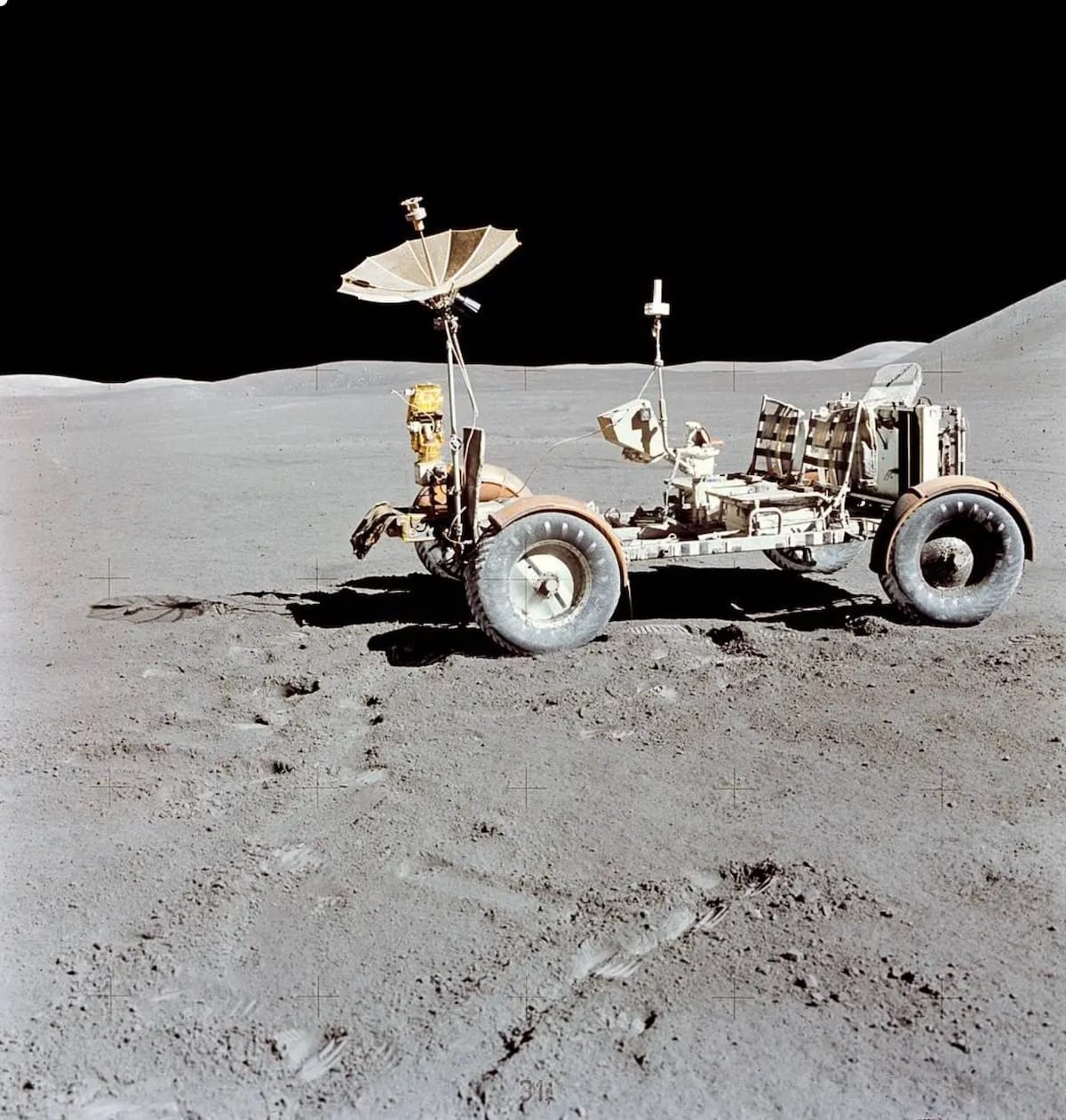
The LRV was an electric vehicle (EV) designed for the moon’s low gravity environment.
It was meant to be as light as possible in order to extend the range of the LRV.
Who would have imagined that EVs existed 53 years ago, let alone on the moon!
And even back then, NASA was dealing with the same tradeoffs the EV industry is dealing with today: vehicle weight versus battery range.
But despite the limitations of the LRV back then, it was still a critical technology for covering more of the lunar surface. Especially when considering the short durations of the Apollo missions.
More importantly today: The LRVs circa 1971 were just a precursor…
A hint of what’s to come in the very near future.
Days ago, NASA announced its selection of three tech “partners.”
These companies will not only develop the next generation of LRVs, which is now being called a Lunar Terrain Vehicle (LTV), but also to provide the LTVs as a service to NASA’s Artemis lunar missions.
Notably absent from NASA’s selection were large aerospace incumbents that we would have normally seen for a project like this. Companies like Northrup Grumman, Lockheed Martin, and Boeing were nowhere to be seen.
Yet the opportunity was large enough to attract them… with maximum potential contracts worth $4.6 billion.
The surprise was that all three companies that NASA selected are small — worth less than $500 million combined. They’re also all 10 years old or less. And only one of them is public: Intuitive Machines (LUNR) — which has a great ticker symbol.
Intuitive Machines was awarded an initial $30 million to develop and deploy its Moon Reusable Autonomous Crewed Exploration Rover (Moon RACER) on the moon.
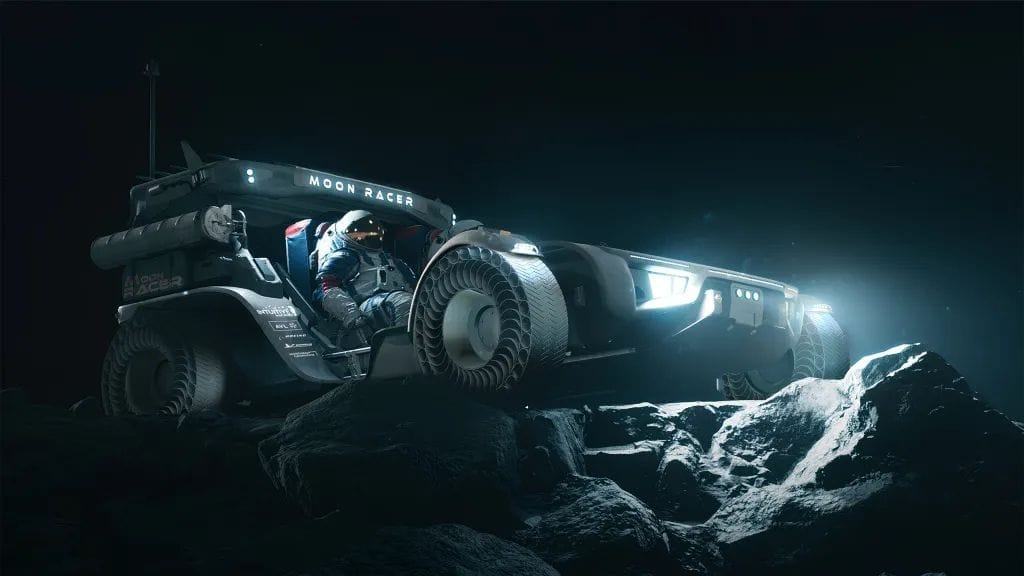
How cool — much has changed in lunar rover design in the last 50 years.
Intuitive Machines holds a unique place in the industry now, as earlier this year it became the only U.S. company to successfully land a payload on the moon — its Odysseus spacecraft — which we explored in Outer Limits — The First Private Sector Company to Land on the Moon.
Intuitive will be acting as a prime contractor, and will actually rely on incumbents Boeing for design and development of the LTV system, and Northrup Grumman for power systems.
While I’m sure this was pitched as a positive, I see this as a negative… given the need for rapid development and innovation. And Boeing is a complete mess right now — the worst I’ve ever seen — with all of its process and quality problems.
The second company is a small, early stage private aerospace company led by a former engineer from NASA’s Jet Propulsion Laboratory and SpaceX — Astrolab.
Astrolab’s FLEX (Flexible Logistics and Exploration) LTV, is seen in the image below. It is designed to carry two astronauts, cargo, and a robotic arm supporting exploration and scientific experiments.
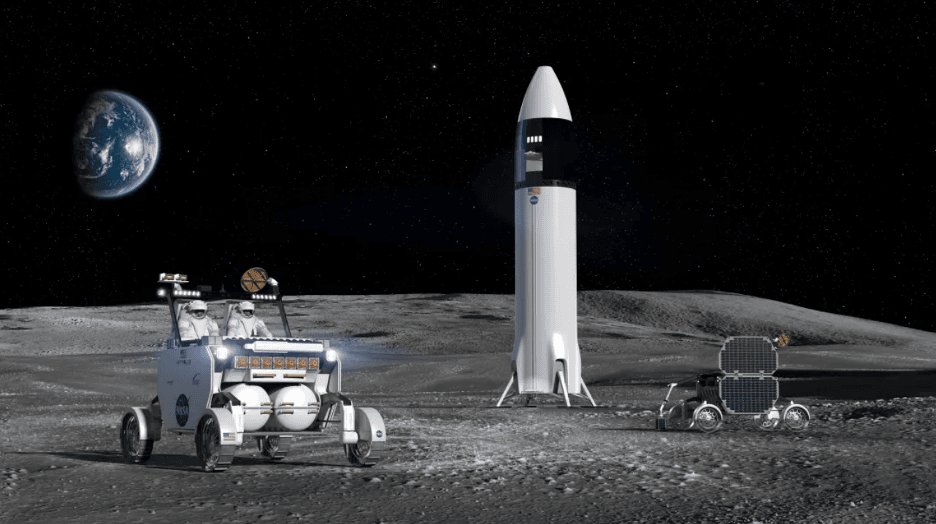
Unlike Intuitive Machines, Astrolab teamed up with two more small private aerospace companies, Axiom Space and Odyssey Space Research.
Axiom is one of the most exciting private aerospace companies in the industry right now, as it is on track to become the first company in the private sector to launch and manage a commercial space station.
It is in a unique position as it has an exclusive agreement with NASA to attach its Axiom space station to the International Space Station (ISS) prior to the ISS decommissioning around 2030.
Odyssey Space Research will provide support for flight software, systems analysis, navigation, and control.
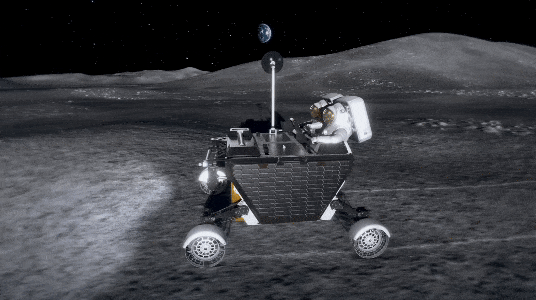
The third company is another small private company aptly named Lunar Outpost. The company just had its first major financing round in 2022 and has been developing a lineup of different lunar rovers, each with different capabilities.
Lunar Outpost arguably has the coolest, most modern looking design for NASA’s LTV project — Lunar Dawn — shown below.
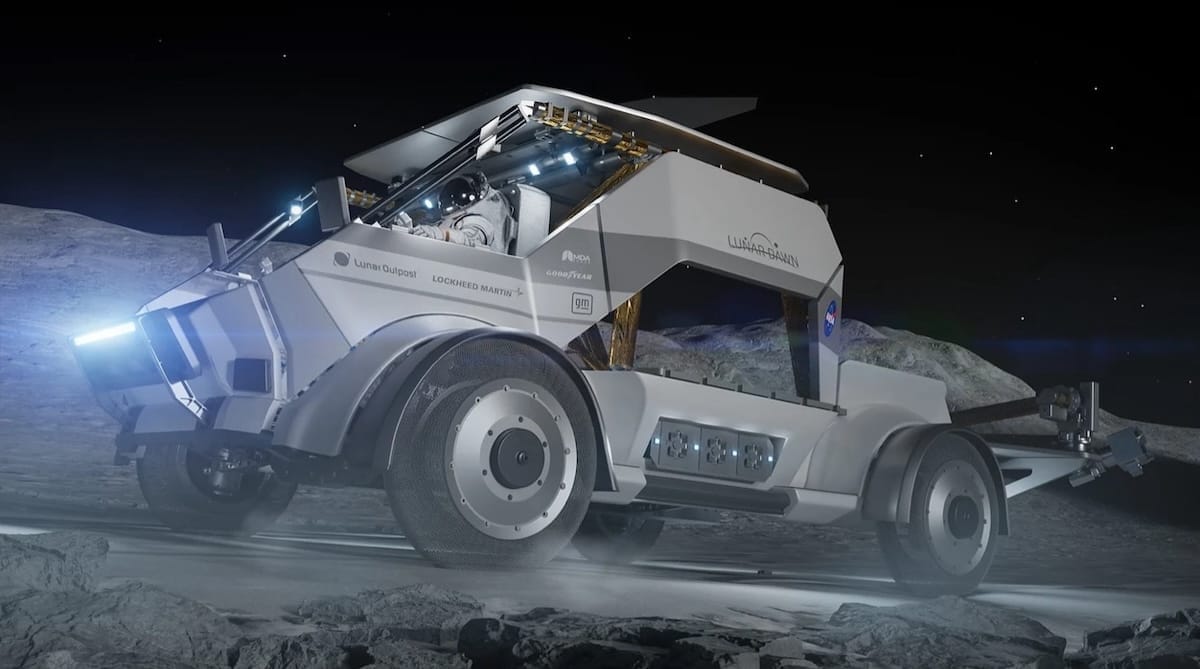
Lunar Outpost took a similar path as Intuitive Machines by partnering with Lockheed Martin, General Motors, and Ontario-based public aerospace company MDA Space.
Lockheed Martin is for systems support, MDA Space is for the robotic arm, and General Motors is for its Ultium battery technology that it has been developing for its own electric vehicles.
Lunar Dawn’s design has the driver and passenger deck elevated and forward in the vehicle, similar to a semi-truck design.
All three companies have taken unique approaches to their partnerships and design to acquire the design parameters required by NASA.
This will make the competition between the three exciting to watch.
What makes it even more interesting is the way the contracts were structured…
There are two elements of NASAs LTV awards that make this so unique:
The two most obvious reasons for this structure are time and money.
Smaller, less bureaucratic companies have a far better chance of innovating quickly and meeting the timelines of NASAs Artemis program.
The first crewed use of the LTV is scheduled for Artemis 5 in 2029. That implies that test LTVs need to be delivered to the moon and tested prior to that, ideally within the next three years.
And in a similar way that SpaceX has transformed launch costs as a private company for the world’s aerospace industry, small nimble companies have a strong tendency to deliver at a fraction of the cost of large incumbents. They simply don’t have the baggage or the overhead.
Which probably begs the question….
Where is SpaceX in all of this? Or perhaps Blue Origin for that matter. A project like this seems to be right up their alley.
Jeff Bezos and his Blue Origin team managed to muscle their way into a contract with NASA as a second Artemis lunar lander provider in 2023, after dramatic uproar over SpaceX’s awards related to the Artemis program.
And SpaceX is literally the key to the entire program with its launch vehicles and its Starship.
Perhaps NASA was concerned about spreading SpaceX too thin.
But it’s hard not to imagine that Elon Musk’s Cybertruck wasn’t designed for the moon.
And let’s not forget that Musk has already launched a Tesla successfully into space.
It feels like something is missing in this story…
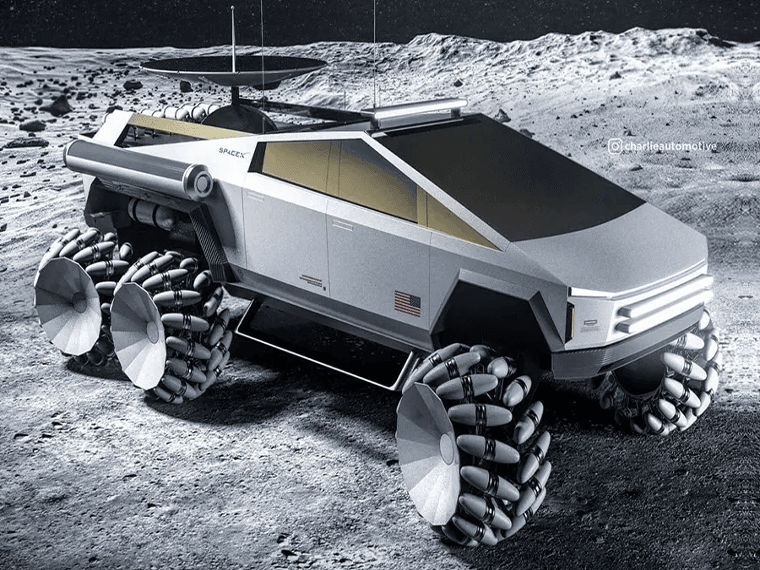
A final interesting point worth noting about these awards…
NASA’s LTV design requirements are for unpressurized lunar vehicles, which is why all three designs are “open air.”
But seriously, how amazing would it be to use Tesla’s Cybertruck chassis design, Tesla’s EV battery technology (which is the best), and Starlink’s connectivity…
And create a pressurized LTV allowing the astronauts to work in the cabin with their helmets off?
And one more thing…
NASA also requires that the LTVs are able to work autonomously on the moon’s surface.
Productivity will increase dramatically when not needing to have human operators to operate the LTVs.
And what company has the most advanced autonomous driving software in the world… by a long shot?
You guessed it — Tesla.
And without all the traffic on Earth, navigating the moon would be a piece of cake for Tesla’s full self-driving software.
It wouldn’t surprise me one bit to see Musk and his teams at Tesla and SpaceX just build and launch a modified Cybertruck to the moon ahead of everyone else.
Musk certainly wouldn’t need permission to do so.
The LTV race is on!
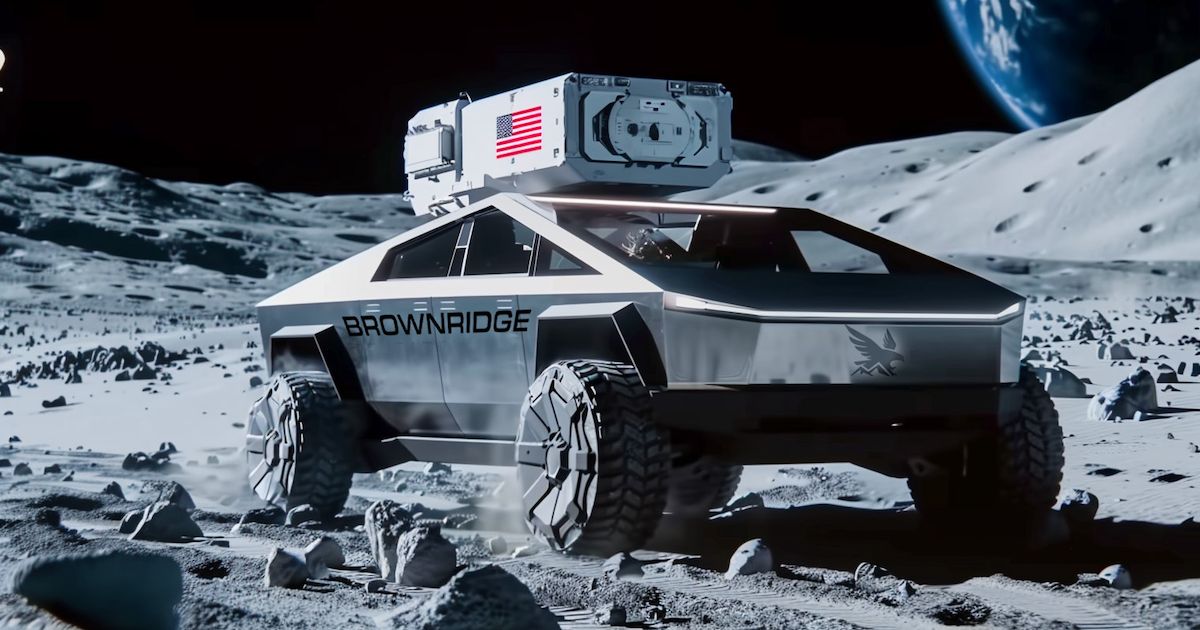
We always welcome your feedback. We read every email and address the most common comments and questions in the Friday AMA. Please write to us here.